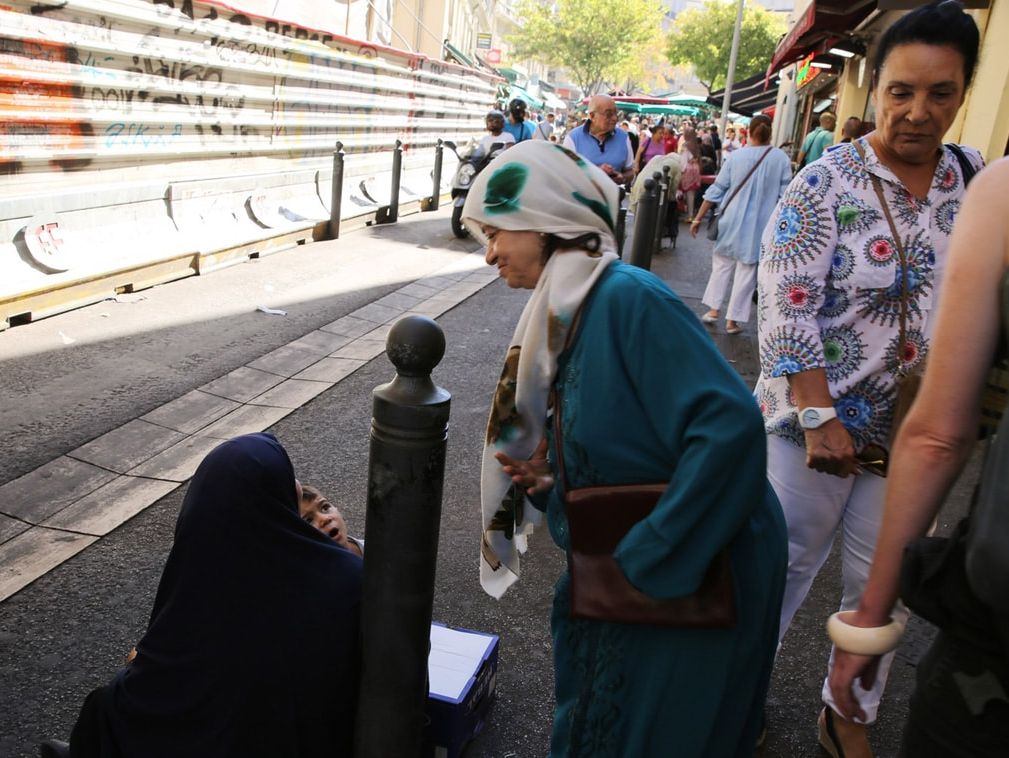|
|
|
When I was asked to write a blog to accompany my Identities article, 'The most cosmopolitan European city: situating narratives and practices of diversity in Marseille', I was asked to provide a suitable image. This faced me with a dilemma that cuts to the heart of my argument: how to choose a picture that symbolises cosmopolitanism in Marseille without falling into stereotypical representations of what and where cosmopolitanism is, and who represents it?
Searching the internet for images of 'cosmopolitan Marseille' in English and in French ('Marseille cosmopolite') brought up quite different results. In the English language search, the majority of photographs showed shots of Marseille intended for international tourists: terrace cafés, well-known landmarks and generic promotional images from restaurant chains, bars and rental apartments. There was just one picture of a busy multi-ethnic market street. In the French search, similar touristy images also came up, alongside images that felt both more everyday and more ‘local’: interiors from different shops displaying open bags of spices for sale and a photograph from the municipal website of local politicians receiving international delegations from Marrakesh and Dakar, accompanied by a title describing Marseille as coloré et cosmopolite ('colourful and cosmopolitan'). There were, in addition, several references to specific impoverished neighbourhoods in the city-centre that are often taken as the embodiment of Marseille’s ‘cosmopolitanism’ while at the same time are the target of local and national urban renewal programmes that seek to attract a different - less ethnically-marked - population into the city centre for many decades now.
In short, carrying out this search for images of cosmopolitanism in Marseille illustrates the extent to which cosmopolitanism is a slippery notion that can mean so many contrasting things, depending on who is doing the talking, with whom, where and when.
In my article, I draw on ethnographic fieldwork in a part of the city that is not usually included in narratives of Marseille’s cosmopolitanism. Over nine months, as Marseille was preparing for its year as European Capital of Culture, I took part in a neighbourhood cultural project with a group of people who could seem far removed from the image of well-travelled cosmopolitan jet-setters and common sense understandings of the ethnically-marked bodies generally taken as the embodiment of cosmopolitan spaces. And this is one part of the story I tell in my Identities article. Beginning with an arts project that was marginalised from mainstream cultural policies, I explore how different ways of framing of social and cultural relations in Marseille, including in terms of Marseille’s cosmopolitanism, have variously included or excluded individuals and groups from material and symbolic aspects of the city. Drawing on the critical cosmopolitanism literature, the second aim of the article was to think about how to describe and analyse social relations relations in ways that move beyond top-down narratives and policies that attempt to describe and organise difference. The image that I have finally chosen was taken by the Finnish photographer Lena Malm, who came to visit to Marseille in 2017 as part of a project exploring how different places around the Mediterranean Sea were given meaning and value. This photograph is taken near the busy market that was brought up in both the English anad French the Internet searches for Marseille’s cosmopolitanism. As mentioned, this largely impoverished area has been targeted for decades by political leaders, part of a campaign to ‘reconquer’ the city centre. Informal street traders and people begging are regularly moved on and the area is surveilled by closed-circuit television. The bollard in the centre of the image is a material sign of these efforts to clean up and eventually ‘gentrify’ this part of the city. Behind the corrugated, graffiti-tagged barrier, the city council has given the go-ahead for the conversion of an Haussmanian apartment block to be transformed into a luxury hotel. Who knows how the social relations of this part of the city will be changed as a result. What I like about this photo, and what caught the attention of Lena, is the contact between the woman begging and the person who stops to talk to her, the smiling face and the friendly, open hand gesture. Despite the different social positions, there seems to a moment of shared humanity, beautifully emphasised by the triangle of light coming out from woman standing. It is this idea of shared humanity, a sort of fellow feeling, generosity and humaneness that can transcend – albeit fleetingly - perceived social or cultural differences that, it seems to me, is often elided within accounts of Marseille’s ‘cosmopolitanism’. My Identities article attempts to draw attention to some of these relations of openness that, along with often very violent forms of othering and displacement, participate in the shaping social interactions in and beyond the city; although of course, always in very unequal relations of power.
Blog post by Claire Bullen, University of Tübingen, Germany
Read the full article: Bullen, Claire. The most cosmopolitan European city: situating narratives and practices of cultural and social relations in Marseille. Identities: Global Studies in Culture and Power. DOI: 10.1080/1070289X.2019.1688952
0 Comments
Your comment will be posted after it is approved.
Leave a Reply. |
|
Explore Identities at tandfonline.com/GIDE |
|
The views and opinions expressed on The Identities Blog are solely those of the original blog post authors, and not of the journal, Taylor & Francis Group or the University of Glasgow.

